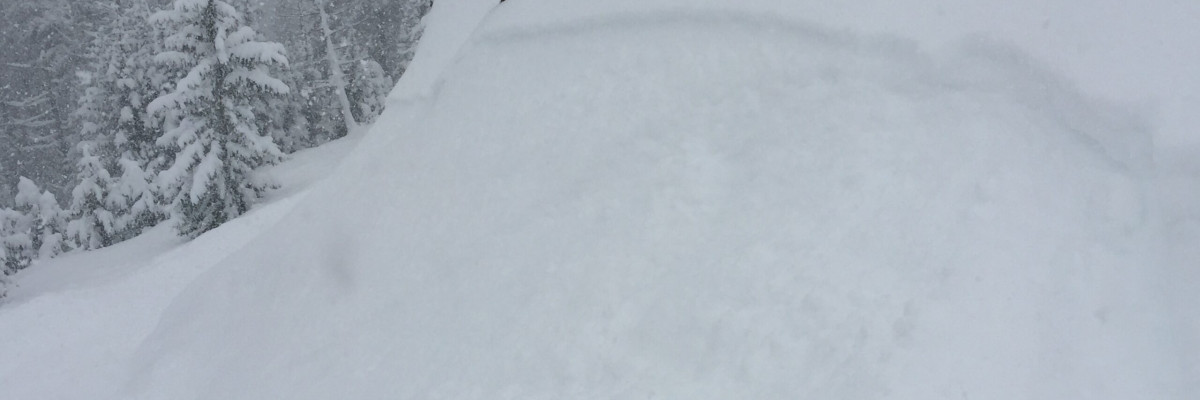Good morning and happy groundhog day, this is Logan King with the West Central Montana Avalanche Center’s avalanche advisory for Tuesday, February 2nd 2016. The current avalanche danger is CONSIDERABLE for the northern part of the west central Montana backcountry. Human triggered avalanches are likely, and natural avalanches are possible. The southern portion of the advisory area received less snow over the past few days and has a MODERATE avalanche danger.
Weather and Snowpack
Temperatures have dropped at mountain locations and are currently in the upper teens with light winds out of the south west. Snow bands have brought significant snow to the northern end of the advisory area and over the past 24 hours, nearly a foot of snow has accumulated. The new snow was lower density than we have seen for a while and only totaled approximately .9 inches of SWE. Overnight most locations saw an additional 1-3 inches of snow.
We toured in the Rattlesnake yesterday and found a significant amount of new low density snow and snow fall rates of about an inch an hour persisted through the day. As the snow piled up it started to become more reactive and we saw a few natural loose slides (pic1) and found the new snow was beginning to react to human triggers later in the afternoon (pic2). At lower elevations and southern aspects, where the new snow was falling on a rain crust was where storm slabs were observed to be most reactive. Storm slabs will be the primary concern today and will be widespread, they will be especially touchy at mid-low elevations and on southern aspects or anywhere else where the storm slab is sitting on a crust.
Loose snow avalanches will be another significant concern today. There is a lot of new snow out there and some of the small “sluffs” we observed were able to entrain a significant amount of snow and moved very quick. Terrain management will be critical today, loose snow slides are likely so be aware of terrain traps and potential consequences of getting caught in a loose snow avalanche.
The storm slab and loose snow problems are focused around the Rattlesnake and Southern Missions. Persistent slabs are still out there and will be a concern everywhere in the advisory area. Persistent slabs have become less reactive as of late but still warrant attention. The only way to know where the persistent slabs are and if they are reactive is to dig. The avalanche danger for the Swan and Bitterroot ranges is MODERATE.
Weather and Avalanche Outlook
Snow is expected to continue through the afternoon with the possibly of localized heavy snow if banding develops again today. However, snow totals will not be as significant as the past couple of days. Any significant new load will rapidly increase the avalanche danger.
Lets hope Phil sees his shadow today. Travis will issue the next advisory on Thursday, February 4th. This danger rating does not apply to operating ski areas, expires at midnight tonight and is the sole responsibility of the U.S. Forest Service.














